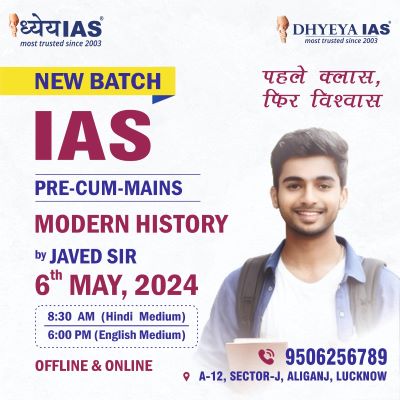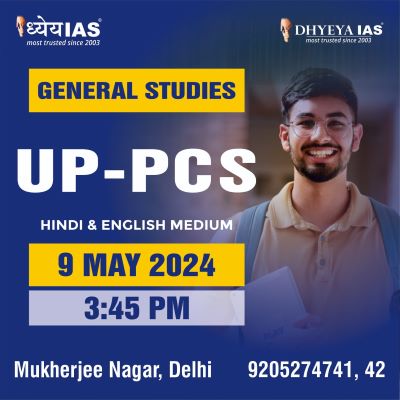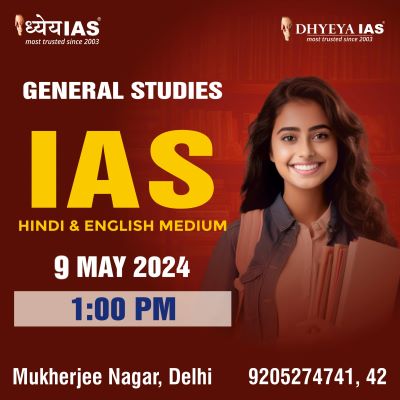Current Affairs Brain Booster for UPSC & State PCS Examination
Topic: India's ASTROSAT Telescope

Why in News?
- India’s first multi-wavelength satellite, which has five unique X-ray and ultraviolet telescopes working in tandem, AstroSat, has detected extreme-UV light from a galaxy, called AUDFs01, 9.3 billion light-years away from Earth.
- The discovery was made by an international team of astronomers led by Dr. Kanak Saha, at the InterUniversity Centre for Astronomy and Astrophysics (IUCAA), Pune and reported in Nature Astronomy. This team includes scientists from India, Switzerland, France, The USA, Japan and The Netherlands.
Mystery of Early Galaxies
- After the Big Bang, the Universe was a hot soup of particles (i.e., protons, neutrons, and electrons). As the universe started to cool, the protons and neutrons began combining into ionized atoms of hydrogen (and eventually some helium).
- These ionized atoms of hydrogen and helium combined with electrons to become neutral atoms — which allowed light to travel freely for the first time, since this light was no longer scattered off free electrons.
- The universe was no longer opaque. But there were no stars, and no galaxies, and the Universe was still dark. A few hundred million years after the big bang, the first stars and galaxies formed and the energy/photons pouring out from them ionized the hydrogen and helium again to protons and electrons. This is era is generally called as the epoch of reionization.
- Astronomers have been looking for sources that reionized the early universe.
- The usual suspects have been the first astronomical objects, especially the newborn small galaxies. But observing ionizing radiation from these sources is next to impossible. But how some of these high energy photons manage to cross all the barriers and reach Earth is a mystery.
- The absorption in the intergalactic medium is so severe that it is impossible to observe ionizing photons in the reionization epoch directly
About Discovery
- The team observed the galaxy within the patch of sky called the Hubble eXtreme Deep field (XDF), which itself sits at the centre of the Hubble Ultra Deep Field (HUDF).
- The HUDF is a small area in the constellation of Fornax, created using Hubble Space Telescope data from 2003 and 2004. It contains thousands of galaxies, and became the deepest image of the universe ever taken at the time.
- XDF contains about 5,500 galaxies, including those that go back 13.2 billion years in time, nearly as old as the universe, which is 13.7 billion years old. The youngest galaxy in XDF came into existence barely 450 million years after the Big Bang.
- AstroSat looked at a part of XDF for 28 hours in October of 2016, a feat only space telescopes could perform because the atmosphere absorbs ultraviolet radiation.
- AstroSat/UVIT was able to achieve this unique feat because the background noise in the UVIT detector is much less than the ones on HST (Hubble Space Telescope).
- The purpose of the study was to understand the conditions in the early universe when baby stars and galaxies were starting to form, and understand the conditions under which ionising radiation was produced, after a period called the Cosmic Dark Age.
Declining Relations
- AstroSat is India’s first multi-wavelength space telescope, which has five telescopes seeing through different wavelengths simultaneously — visible, near UV, far UV, soft X-ray and hard X-ray. It can observe the same target in visible, X-ray, and UV wavelengths together.
- Onboard the AstroSat is a 38-cm wide UltraViolet Imaging Telescope (UVIT), which is capable of imaging in far and near-ultraviolet bands over a wide field of view. This data from the extreme-UV emission from the galaxy was collected by the UVIT instrument.
- AstroSat was launched on 28 September 2015 by ISRO into a nearEarth equatorial orbit.
- It is a multi-institute collaborative project, involving IUCAA, ISRO, Tata Institute of Fundamental Research (Mumbai), Indian Institute of Astrophysics (Bengaluru), and Physical Research Laboratory (Ahmedabad), among others.
























